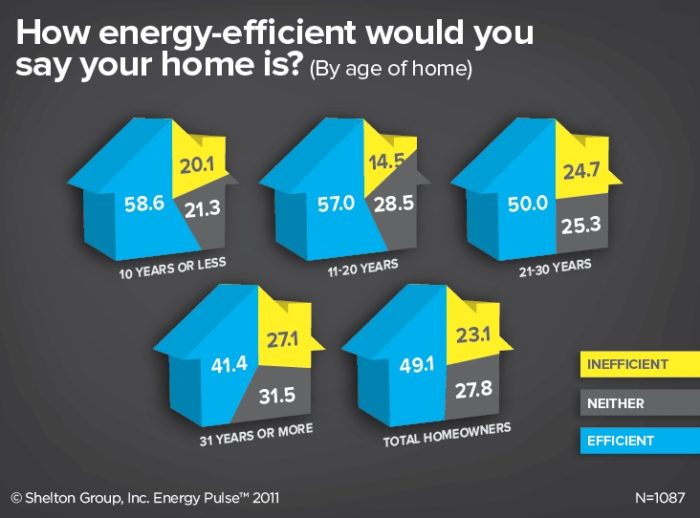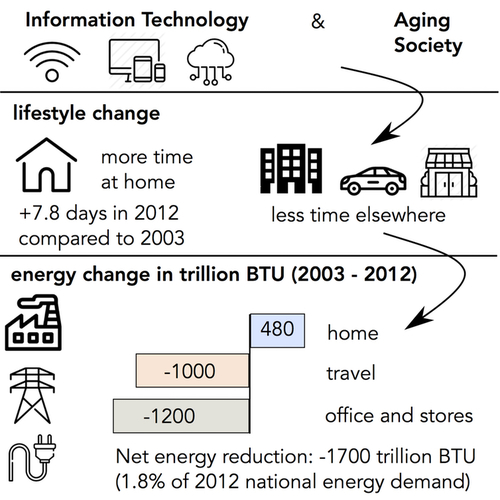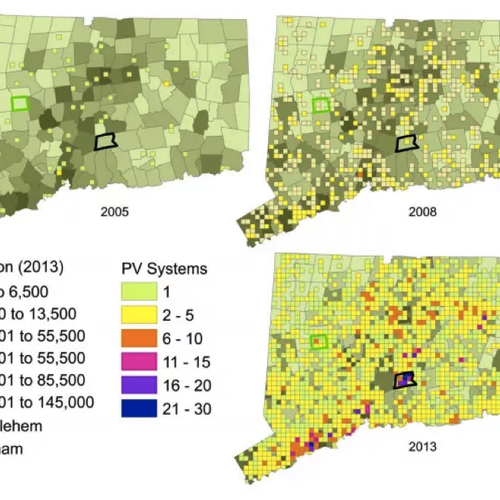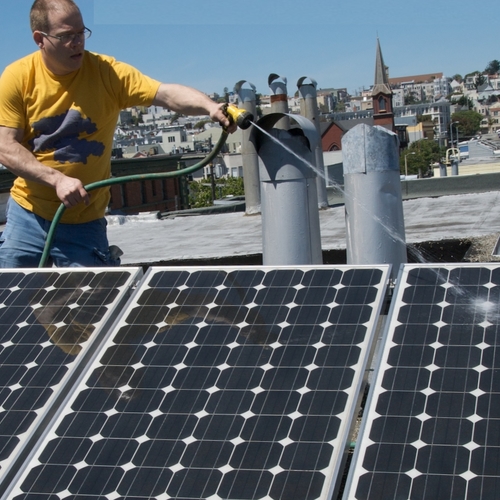Image Credit: 2011 Shelton Group, Inc.
Image Credit: 2011 Shelton Group, Inc. Asked where they would most likely get information about energy retrofits, most survey respondents were inclined to search online. More respondents in 2011 said they would consult their utility on the subject. The survey also showed that even though most respondents thought their home utility bills had increased over the last two years, only 26% attributed that to their own increased consumption. Compared to those participating in the 2010 survey, respondents in 2011 were much less progressive in their thinking about how to address national energy needs and manage resources.
Most Americans are attuned to the connection between the energy efficiency of their homes and the money it costs to operate them, and a few are inclined to spend at least some of their budget on energy-efficiency improvements. Those are some of the findings of Energy Pulse ’11, the seventh annual market study conducted by energy-focused advertising and consulting firm Shelton Group.
The problem is, if consumers make any improvements at all, many take some but not all of the steps they need to significantly decrease in their energy bills.
Compared to Energy Pulse results compiled in 2010, the 2011 study shows that more people — 23% vs. 14% in 2010 — rate their homes as inefficient, although the percentage (71%) who said they were using the same amount of energy as they did five years ago remained about the same.
Some of the study’s more interesting — and, in some ways, puzzling — findings are pegged to consumers’ responses to utility bill increases, their perceptions of the reasons for the increases, and their opinions about what policy responses are needed to address rising energy costs.
When good enough really isn’t
In 2009 and 2010, for example, consumers told Shelton Group that their bills would have to increase by $128 before they would make energy-efficiency improvements. For respondents in 2011, that threshold had dropped to $112, and yet they had embarked on fewer energy conservation behaviors and major energy retrofit improvements in 2011 — an average of 2.6 — compared to 2010.
The study notes that four such improvements — the “magic number” of upgrades, according to the study — tend to produce meaningful energy savings, while anything short of that tends to yield mediocre results.
Not that the 2.6 improvement level is necessarily an inexpensive commitment: homeowners cited window replacement and adding insulation as the top two improvements they had undertaken.
But the study, which analyzes responses from 1,502 people via online and telephone inquiries collected between August 9 and August 22, also indicates that Americans are increasingly likely to blame oil companies (rather than themselves) for high energy prices, and that they now rank as top priorities domestic oil and natural gas production over development of alternative energy sources. What’s more, alternative energy sources, fuel efficient cars, and energy efficient homes were more likely to be cited as top priorities in 2010 than in 2011 by margins of 37.6% in 2010 to 28.3% in 2011, 24.6% to 17.9%, and 21.7% to 13.1%, respectively.
The bottom line is that most Americans are still not knowledgeable about alternative energy sources, in spite of the millions of dollars spent by government programs to promote them. Many people, the study notes, don’t know what the most common fuel source is for electrical power (coal) or what steps to take to cost-effectively retrofit their homes. Their homes might be a bit leaky, but the attitude seems to be that they’re energy-efficient enough.
The marketer’s angle
For Shelton Group’s purposes, of course, it is important to try to understand what motivates — or what might motivate — consumers to pay attention to energy-efficiency deficiencies and possible solutions. In its executive summary of the Energy Pulse study, the company points out that energy use and energy waste are, until the utility bill arrives, invisible features of a home’s operation. So Shelton Group is trying to come up with ways to make energy seem like less of an abstraction and more like a tangible asset in which consumers will have a stronger personal interest.
Certainly a tripling of energy prices would generate more intense interest in energy and ways to reduce its use. But the study also suggests tying messages that encourage energy efficiency to consumers’ core values.
With that in mind, the analysis cites possible approaches to four kinds of consumers:
For absolutists, the energy message should be “about doing the right thing, which will give them a sense of righteousness and relief.”
For individualists, “we should appeal to their need for status and financial gain, which will give them a sense of security and achievement.”
For humanistic thinkers, “we should connect energy efficiency to being part of a movement or a community, which will fulfill their need for personal connection.”
Finally, for systemic thinkers, the emphasis should be on “themes of innovation, possibility and problem solving should resonate and spark feelings of integrity and competence.”
The trick, the study points out, will be to come up with ways to effectively communicate key concepts to those four types of consumer. The authors of analysis suggest that the federal government, whose energy policy has not been sharply focused, could be an ideal resource, but its message must be coherent and consistent:
“Our studies have shown for years that Americans expect government and companies to fix some of the pressing issues of the day — including energy — and they’re looking for leadership. How can we expect them to have a personal energy plan if there’s no example for them to follow?”
Weekly Newsletter
Get building science and energy efficiency advice, plus special offers, in your inbox.
















5 Comments
great information, even if it's completely disheartening!
Thank you for sharing this study! It confirms many suspicions that I imagine many of us in the industry have had for some time. And I thought it was only homeowners here in the Southeast that replaced windows before their HVAC system or Water Heater. I can only laugh reading this, because it's better than the alternative...
Windows
The funny thing is: most homeowners attribute their comfort level to the windows, which should be last on the list of energy upgrades. Unless, of course, they are louvered glass.
Need of coherent message on energy conservation
By your classification scheme, it appears that I am a "systemic thinker". My "problem" has been preparing to build our retirement home that will be energy efficient. For the last year or so I have read books, periodicals, and tons of online articles, research papers, forums. I've made more than one visit to a model home at LSU. I've, attended a number of home builders shows, all with an interest in identifying the best building practices for energy conservation, with a focus on what applies to the hot, humid climate of the gulf coast. And, I must say that the message and the means remain somewhat unclear to me.
Controversies and debates continue on such things as which rating system to follow (Energy Star vs. LEEDS vs. HERS), type of ventilation (HRVs vs. ERVs vs dehumidifiers vs. exhaust systems), the practical amount, kind and location of insulation (the warranty on some brands of shingles is voided if over unventilated attics, while for others it is not), tankless or tank water heaters, ceiling fans do or do not lead to energy saving habits, etc. Add to this the political manipulations of pushing "green" systems that fail to be sustainable without huge government subsidies and in many cases have a pay back time that renders them silly. Being retired has afforded me significantly more time than most folks have to conduct this research. It is no surprise to me that the general public shrugs their shoulders, and just goes on with clearer and more immediate problems of life!
Further research
Raymond,
If you have time and inclination to keep up the research, many of your questions are addressed in the articles listed here: https://www.greenbuildingadvisor.com/blogs/dept/musings/how-do-everything
Thanks you for "How to Do Everything" link
Thanks T.J.! God willing, I'll never stop reading, and learning. And retirement provides even more time to do so. Some of that time will go toward building, but I'll definitely continue my research.
I'm building my workshop first so as to better enable me to do some of my own work, such as building cabinets for our house, and to pilot energy-saving materials & procedures. We are in the 110 MPH zone, as well as being designated in a "flood risk" area of Louisiana - so add these challenges to the quest to build with energy efficiency. My contractor started forming the slab today - very excited! But, I'll make sure I have time to "digest" ALL of the articles at the links you provided, as well as the MANY other interesting and informative ones on this site.
Again - thanks!
Log in or create an account to post a comment.
Sign up Log in